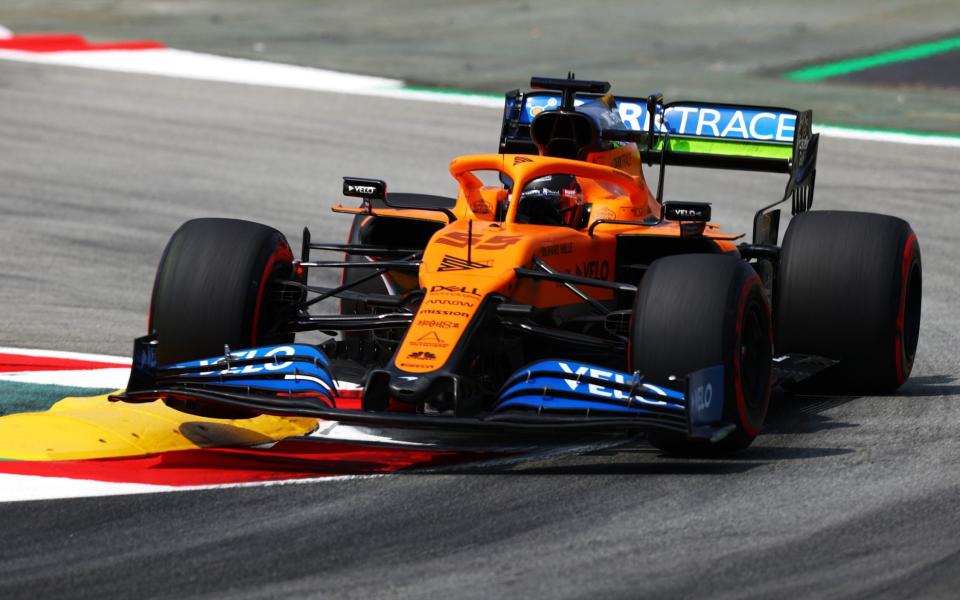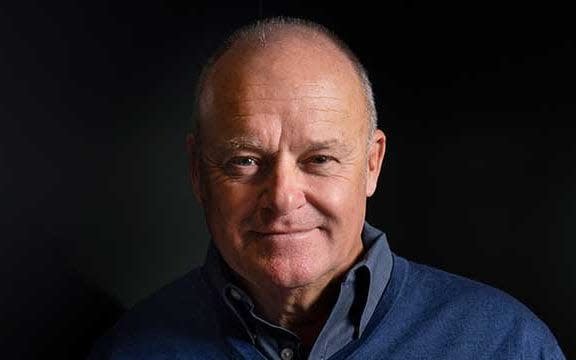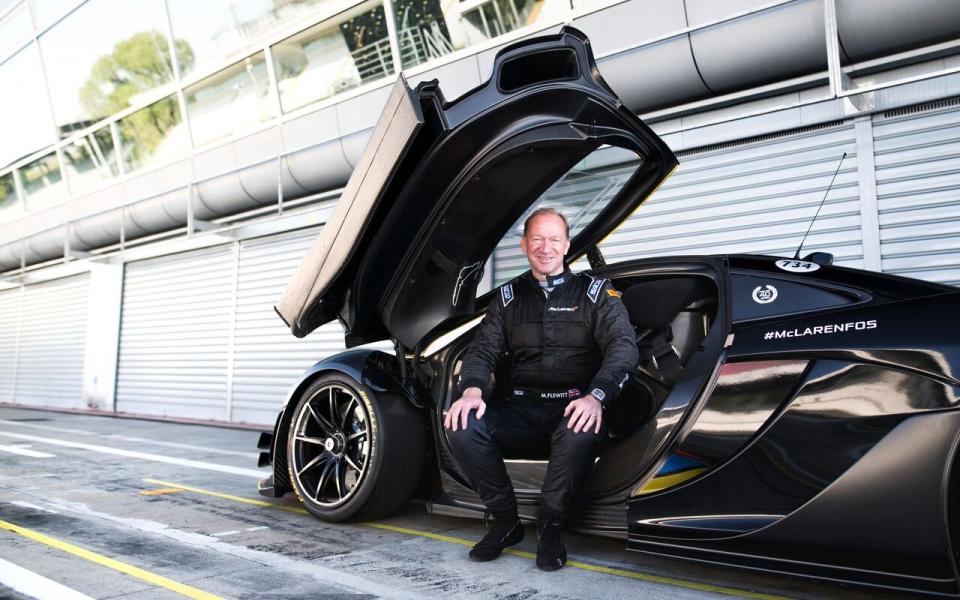Supercar maker McLaren looks to get back on track

Supercar company McLaren’s Norman Foster-designed headquarters is often described as a real-world version of a Bond villain’s lair, despite its location just off a roundabout near Woking’s recycling centre.
Unlike the antagonists in a 007 film, the glass-fronted building’s occupants may not be planning world domination, but they are just as secretive.
So the events over the past few months at McLaren have led to speculation about just what is going on inside the business majority-owned by Mumtalakat, the sovereign wealth fund of Bahrain.
As the pandemic hit, McLaren took a £300m cash injection from shareholders. But in May, as it faced a tightening squeeze on resources, the Government turned down its request for a £150m taxpayer-backed loan. Days later the company cut a quarter of its workforce, some 1,200 jobs.
With the first lockdown having halted production and demand falling for its expensive cars, which start at £130,000, McLaren was running out of cash.

Bahrain came to the rescue again, with a £150m loan from the Gulf state’s bank, but not before a battle with McLaren’s bondholders played out in the press about it remortgaging its collection of historic cars.
Bondholders argued they already had a claim over the 175-odd vehicles, which are valued at more than £250m and include models driven by Formula 1 greats such as Ayrton Senna and Lewis Hamilton.
McLaren was willing to argue the point in court until the two sides thrashed out their differences.
Banks have now been appointed for a refinancing of McLaren’s debt pile of around £600m and another equity raise.
The halting of Formula 1 racing during pandemic struck did not help either. The sport is something of a loss leader for McLaren. Running the team costs about £150m annually, giving it brand awareness and technical knowledge but no certainty of a financial return.
The most recent accounts for the McLaren F1 team for the year ending December 2018 show that it had a turnover of £123m and ran up a £101m pre-tax loss.
McLaren group interim results for the half year to June 30, 2020 underlined how hard Covid-19 hit the company. It posted a £243m pre-tax loss on sales of £218m, including the company’s F1 racing team and Applied Technology arms. That was down from sales of £698m the year before.
Sales of cars in the automotive division, which normally represent 85pc of McLaren’s turnover, were dire. Just 584 cars were wholesaled to dealers, less than a quarter of the number in the same period a year before.
Looking ahead, McLaren has forecast revenue of between £750m and £800m for the year, against £1.49bn last time round, while sales of cars for the year were expected to fall from 4,662 to just 1,700.
Ambitious plans for new models and R&D were also scaled back, with capital expenditure cut by £30m in the half year to £121m.
No wonder, then, that the Bond villain’s lair was put on the market in a sale-and-leaseback deal with the hope of shoring up the company’s finances.

In the industry there are also tales of McLaren extending supplier terms, as it seeks some breathing space for its strained balance sheet.
To those casting an eye over the automotive industry, it’s only natural that they see parallels between McLaren and Aston Martin, its Warwickshire-based rival. Its flotation at £19 per share two years ago ended in disaster, resulting in a rescue by Canadian billionaire Lawrence Stroll.
The F1 fan’s interest in the marque favoured by 007 emerged late last year, and Mr Stroll led a consortium that has pumped more than £500m into business.
Could McLaren be running out of road and heading for a similar fate?
In the close-knit automotive world, few are willing to speak publicly about what’s going on under the bonnet - or to be accurate, behind the driver, as McLaren’s cars are rear-engined - at the manufacturer.
“Refinancing every few months is not the sign of a healthy business,” says one veteran industry analyst. “Both Aston and McLaren are similar because they seem structurally unable to generate significant liquidity.”
He fears that if the sales hit from coronavirus proves to be more than just a short-term dip, McLaren could find itself very quickly having to rethink its future, looking beyond its current sports car-only offering.
Such a rethink would be an anathema to McLaren automotive chief executive Mike Flewitt, who once told The Telegraph the company was “more likely to make fridges than SUVs”.

Flewitt is a trailblazer for lightweight vehicles, and considers ever heavier cars to be a regressive step, despite the growing popularity of SUVs.
However almost every other luxury car company has shifted into the SUV category, including Aston, whose future rests largely on the success of the DBX, which has been given rave reviews by the motoring press.
“If your refinancing model is not working, and you keep on having to refinance, do you keep on doing it, or do you change the business model?” asks the veteran industry analyst, adding that “relying on a network of relationships” from rich car fans for rescues “is not a sign of normal governance”.
Hanging a 'For Sale' sign over McLaren’s headquarters might appear cause for concern, but to some observers it’s a signal McLaren is becoming a more normal company.
Tim Urquhart, principal automotive analyst at IHS Markit, says: “A sale and leaseback is the company trying to find another way of raising money before having to go back to anchoring shareholders for funding.”
McLaren opened the Woking base on the site of a former mushroom farm in 2003, when the business was growing fast under founder Ron Dennis, who departed three years ago. Back then McLaren was under his control and acted in the way a private company with a dominant shareholder can.
Things have changed since Mr Dennis’s departure - most recently with the appointment of City heavyweight and ex-Diageo boss Paul Walsh as executive chairman. Owning such a property is not core to McLaren’s business, or "an efficient use of capital", according to insiders.

However, the company is unlikely to get the estimated £300m cost of the building back on sale. It’s understood to be on the market for £200m. But even that might be an ambitious target. How many other occupiers would need such a striking and specialised building, especially with a supercar factory attached?
One of the biggest questions around McLaren concerns its F1 operations. The company is synonymous with the sport - even if its performance hasn’t been stellar for a few years.
Giving up on such a financial drain would be a relief but would damage a global marketing opportunity like no other.
Mr Flewitt has talked about bringing in outside investors who are willing to absorb the costs of going racing.
The sport’s budget cap may also help. McLaren team boss Zak Brown has backed the $175m (£130m) limit on spending coming in next year, which could help stem some of the losses that F1 inflicts on the overall business.
It could even improve the team’s performance on the track, as it cannot currently match big-spending Ferrari or Williams.

Speaking in the summer, Brown said the “reform is good for all of us”. “We are no longer in a position where we are missing something,” he added. “There were times when McLaren was one of the richest teams. In the past five years, we’ve been missing $150m on Ferrari, Mercedes, and Red Bull. You cannot make up for this deficit. It’s just too big.”
Compared with the dark days of summer, the mood at Woking has improved, with the business having exited the “crisis mode” it was in.
This week it announced its forthcoming hybrid car will be called the Artura, which will be priced at the lower end of the company’s range.
Performance for the full year might also turn out to be less gloomy than forecast. The 765LT car released in the summer has sold out, along with the £1.75m “Speedtail” capable of hitting 250mph. Deposits for these 1,000hp vehicles are flowing into the business, delivering much-needed cash.
“The restructuring is bedding in, people are looking to the future, and everyone’s getting on with building and selling cars,” says one insider.
There's talk that the company's third quarter trading update due on Wednesday will contain positive news highlighting a recovery and potential new investment.
But IHS’s Urquhart wonders how long that can last, with McLaren solely focused on sports cars, a segment that could soon be an anachronism.
He adds: “It’s not that McLaren is faring any worse than anyone else, it’s a tough time for everyone. But their product range is very narrow. The company is doing what it can to but you have to ask what is the long-term plan – what does McLaren 2.0 look like?”
McLaren declined to comment.
